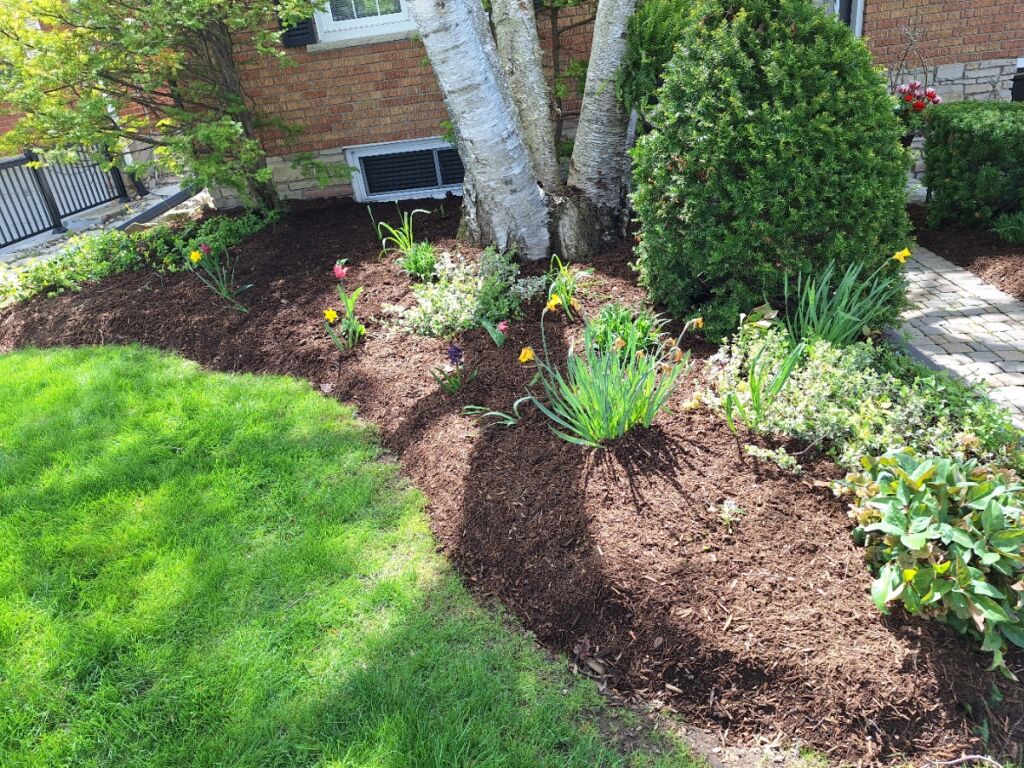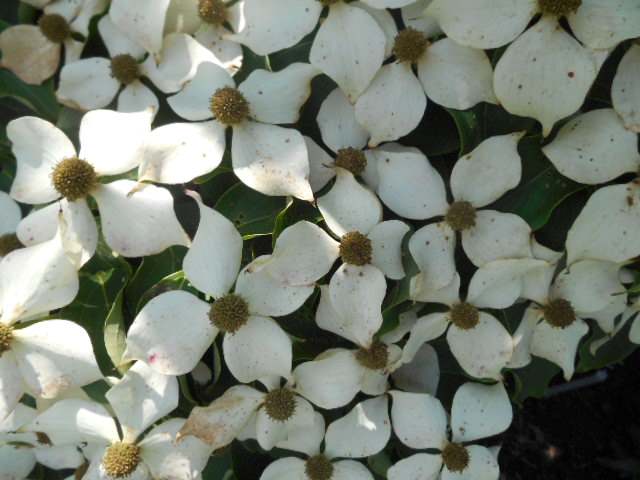Why Weed Barriers Do Not Work: Why I despise them!
Weed barriers, also known as weed mats or landscape fabric, are (unfortunately) commonly used in gardening and landscaping theoretically to prevent weed growth. These barriers are designed to block sunlight and limit the availability of nutrients to weeds (and your garden plants), thereby reducing their ability to grow. Despite their widespread use, many gardeners and landscapers find that weed barriers are not as effective as advertised. In fact, there are several reasons why weed barriers often fail to deliver the desired results.
Sidebar: Years and years ago I was at an industry trade show and met the owner of the company that claims to be the pioneer of weed barriers. He told me it was a marketing idea to drive more fabric sales. True or not? I must say I believed what he told me.
1. Limited Longevity
One of the primary issues with weed barriers is their limited longevity. Most weed barriers are made from materials such as polypropylene or polyethylene, which degrade over time when exposed to the elements. Once the mulch layer on top of them starts to erode or decay the fabric will be exposed to the elements.
UV radiation from the sun, temperature fluctuations, and moisture can all contribute to the breakdown of these materials. As the barrier deteriorates, it loses its effectiveness in preventing weed growth – it breaks apart allowing weed growth. This degradation can occur more quickly than expected, leading to the need for frequent replacement or maintenance.
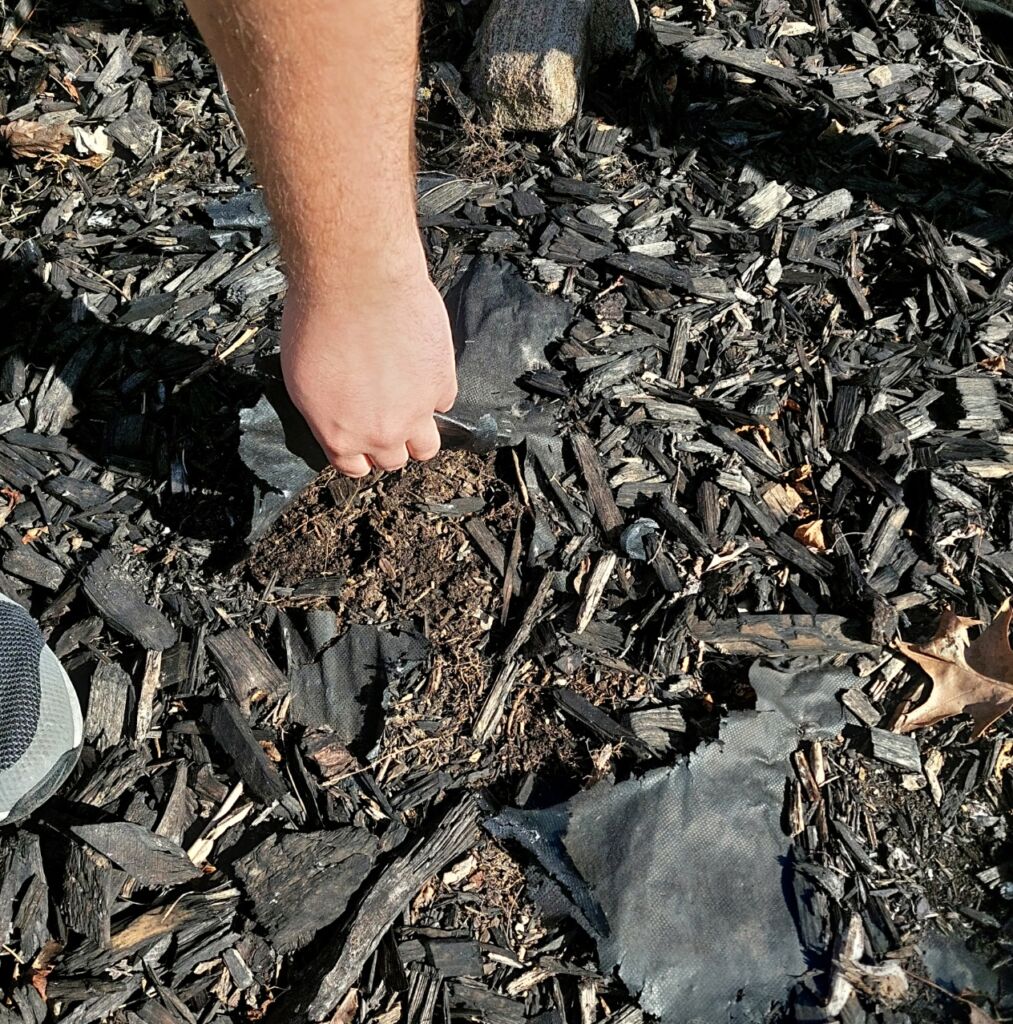
2. Inadequate Installation
Proper installation is crucial for the effectiveness of weed barriers. Unfortunately, many barriers are installed incorrectly, which compromises their ability to block weeds. Common installation errors include:
- Insufficient Overlap: Weed barriers should overlap by several inches to prevent weeds from growing through the seams. However, if the overlap is insufficient, weeds can easily penetrate the gaps. Insufficient overlap is often caused by the homeowner not purchasing enough fabric.
- Inadequate Anchoring: Weed barriers need to be securely anchored to the ground to prevent them from shifting. If they are not properly secured, wind and water can move the barrier, creating openings for weeds to grow through. It is very difficult to anchor the fabric around tree roots.
- Poor Ground Preparation: The ground should be thoroughly cleared of existing weeds and debris before the barrier is installed. If this step is skipped, weeds can continue to grow underneath the barrier and eventually penetrate it.
- Most people get lazy in their weeding and leave a good portion of weed roots underneath. The weeds will likely grow pushing the fabric aside.

You can see this fairly new installation of landscape fabric has not been installed correctly. The “bulge” of fabric should have been pinned down. This is not our job – we NEVER use weed barrier.3. Weed Growth on Top of the Barrier
Even when weed barriers are installed correctly, they are not immune to weed growth on top of the barrier. Organic matter such as mulch, leaves, grass clippings, and soil can accumulate on the surface of the barrier. Over a fairly short period of time, this debris can create a layer of organic matter that provides a suitable environment for weed seeds to germinate and grow.
In some cases, the roots of these weeds can penetrate the barrier, further reducing its effectiveness. This also makes it very difficult to remove new weed growth.

4. Restriction of Soil Health – HUGE FACTOR!
Although I am not directly citing any studies, weed barriers have been proven to have a negative impact on soil health, which can indirectly contribute to weed growth. By blocking sunlight and limiting water infiltration, weed barriers can disrupt the natural processes that maintain healthy soil. This can lead to several issues:
- Reduced Microbial Activity: Soil microorganisms play a crucial role in breaking down organic matter and cycling nutrients. Weed barriers can limit the exchange of gases and moisture, reducing microbial activity and leading to poorer soil health. All of the beneficial bacteria and fungi as well as macro-organisms need oxygen to live.
- Compaction: Weed barriers can contribute to soil compaction, especially when covered with heavy mulch or gravel. Compacted soil has reduced pore space, which limits root growth and water infiltration. Weed barriers lead to compacted, de-oxygenated soil which limits the life that will live in the soil.
- Nutrient Depletion: By preventing organic matter from reaching the soil, weed barriers can limit the replenishment of nutrients. Over time, this can lead to nutrient depletion and poorer plant health, making it easier for weeds to establish themselves and desirable garden plants to suffer. Many weeds ARE weeds because they grow best on compacted nutrient depleted soil.
- A generally unhealthy garden in part due to the restrictions weed barriers have on the soil. Unhealthy soil means unhealthy plants. Plus it is ugly.
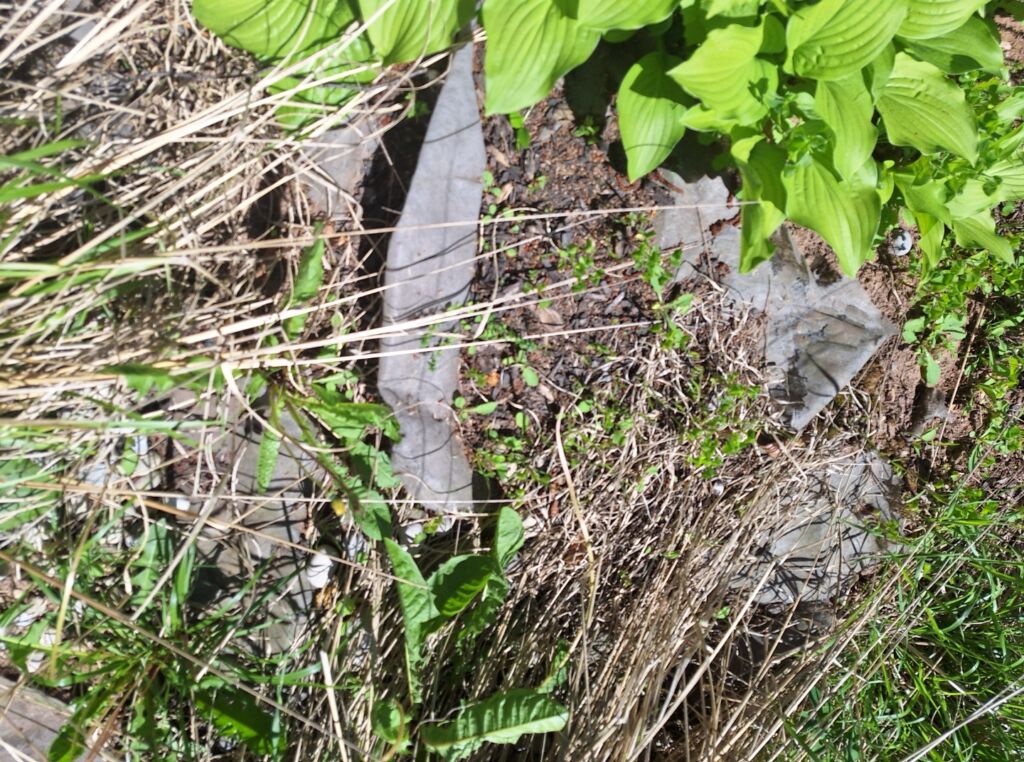
5. Cost and Maintenance
While weed barriers are often marketed as a low-maintenance solution, they can actually be quite costly and labor-intensive to maintain. The initial cost of purchasing and installing the barrier can be significant, especially for large areas.
Additionally, as the barrier degrades or becomes less effective, it may need to be replaced or supplemented with additional layers. Maintenance tasks such as removing debris from the surface of the barrier and re-anchoring loose sections can also be time-consuming.
6. Ineffectiveness Against Certain Weeds
Weed barriers are not equally effective against all types of weeds. Some weeds have particularly strong and resilient root systems that can penetrate or grow around the barrier. For example:
- Perennial Weeds: Perennial weeds, such as dandelions, bindweed and thistle, have deep root systems that can penetrate even well-installed barriers. These weeds can regenerate from small root fragments, making them difficult to control with barriers alone.
- Aggressive Weeds: Some aggressive weeds, such as thistle and quackgrass, can spread through rhizomes that can bypass the barrier. These weeds can quickly establish themselves on both sides of the barrier, rendering it ineffective – and quite ugly.
7. Environmental Considerations
There are also environmental concerns associated with the use of weed barriers. Most barriers are made from synthetic materials that are not biodegradable. When these materials degrade, they can release microplastics into the soil, contributing to pollution. Additionally, the production and disposal of synthetic weed barriers have a carbon footprint, which can be significant over time.
8. Alternative Weed Control Methods
Given the limitations and drawbacks of weed barriers, many gardeners and landscapers are turning to alternative weed control methods. Some of these methods include:
- Mulching: Organic mulches, such as natural pine mulch (our favourite), straw, and compost, can effectively suppress weed growth while improving soil health. Mulch provides a physical barrier that blocks sunlight and reduces weed germination. Unlike synthetic barriers, organic mulch decomposes over time, adding nutrients to the soil.
- Natural pine mulch is also aesthetically pleasing.
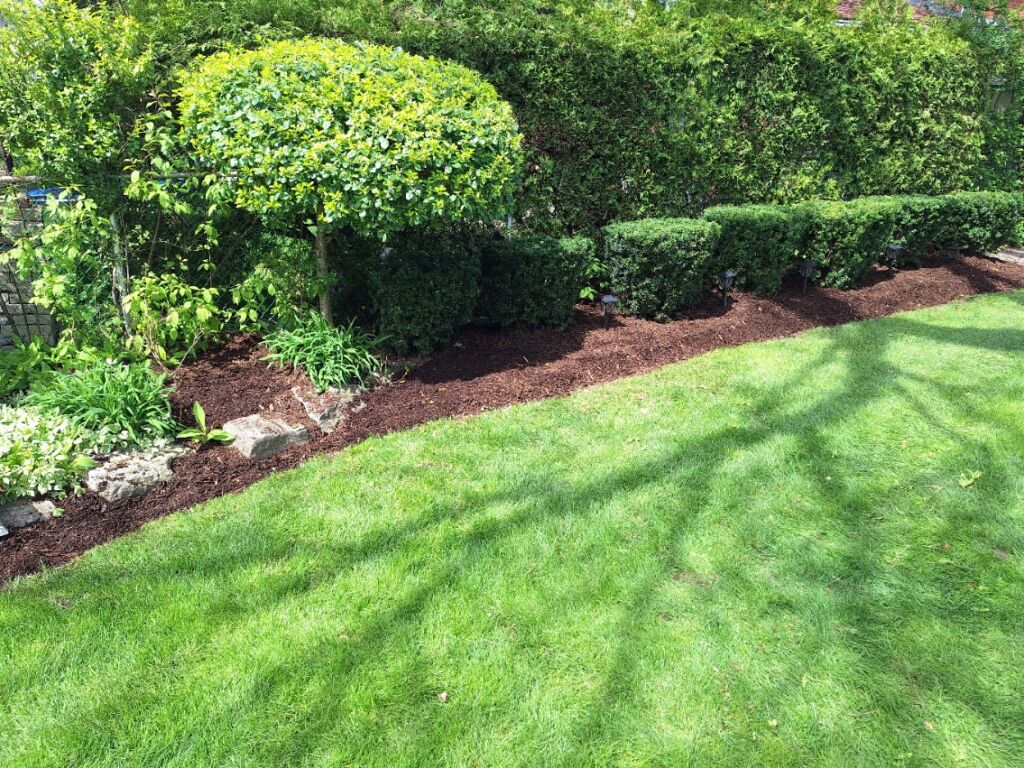
8. Cover Crops: Planting cover crops can help suppress weeds by outcompeting them for resources. Cover crops such as clover, rye, and buckwheat can provide ground cover, reduce soil erosion, and improve soil fertility. Cover crops are most commonly used in vegetable gardens and of course, farming.
- Manual Weeding: Regular hand weeding and hoeing can be effective for controlling weeds, especially in garden areas. While seemingly labor-intensive, manual weeding allows for precise removal of weeds without harming desirable plants. When coupled with an organic mulch, weeding is a very important step.
- Herbicides: In some cases, the targeted use of herbicides, such as vinegar, may be necessary to control particularly persistent weeds. However, herbicides should be used with caution due to potential environmental and health impacts.
9. Case Studies and Practical Examples
To illustrate the challenges associated with weed barriers, consider the following case studies and practical examples:
- Home Garden: A gardener installs a weed barrier in a vegetable garden to reduce the need for weeding. Within a few months, the barrier begins to degrade due to exposure to sunlight and rain. Weeds start growing through the seams and around the edges, leading to increased maintenance efforts and a lack of aesthetic appeal.
- Commercial Landscaping: A landscaping company uses weed barriers in a commercial property to maintain a tidy appearance. Despite proper installation, debris accumulates on top of the barriers, providing a growth medium for weeds. The company has to invest additional time and resources in regular maintenance to remove the debris and weeds.
- Public Parks: In a public park, weed barriers are installed around trees and flower beds. Over time, the barriers restrict water infiltration and contribute to soil compaction. The trees and plants show signs of stress, and weeds start to grow on top of the barriers. The park management decides to replace the barriers with organic mulch to improve soil health and reduce maintenance costs.
Our Conclusion(s)
While weed barriers may provide some short-term benefits in weed control, their long-term effectiveness is often limited by factors such as material degradation, inadequate installation, and environmental impact.
The potential negative effects on soil health and the challenges of maintaining weed barriers further reduce their appeal. Gardeners and landscapers should consider alternative weed control methods, such as mulching and manual weeding, to achieve more sustainable and effective results. By understanding the limitations of weed barriers and exploring other options, it is possible to create a healthier and more resilient garden or landscape.
If I may end with this observation from my years working in horticulture. Regular use of organic mulch works well to suppress most weeds. Over time, the soil health improves, the garden plants start to become healthier and more robust and weeds just don’t compete well under those conditions. You will end up with less and less weed growth and a lovelier garden.
As always, reach out to me with any questions.
